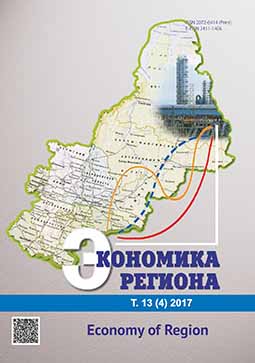Сравнительная оценка эффективности развития спорта на региональном уровне на основе метода DEA
Comparative Assessment the of Effectiveness of Sports Development in the Russian Regions on the Basis of DEA Method
Author(s): Yury Aleksandrovich Zelenkov, Valery Anatolevich Tsvetkov, Ilya Vasilyevich SolntsevSubject(s): Economy, Geography, Regional studies
Published by: Институт экономики Уральского отделения Российской академии наук
Keywords: sports development in region; factors of sports development; sports finance; sports resources; mass sports; professional sports; great sporting achievements; adaptive sports; PLS-SEM; sports developme
Summary/Abstract: The article investigates the financial resource management for the development of mass and elite sports at the regional level. The authors used statistical data of the Ministry of Sports that include 28 socio-economic indicators and 39 indicators of sports development in 82 regions for 2012 — 2015. A model of sports development was built using PLS-SEM method. We identified the following latent variables: economic development of the region; funds allocated to sports development; availability of resources; development of mass sports; development level of professional sports; results in elite sports, results in adaptive sports. The level of regional economic development affects the amount of funding allocated to the sports, which in turn determines the availability of resources. Availability of resources affects the success in the development of mass and professional sports. Success in professional sports determines results in great sporting achievements and adaptive sports. Structural modelling allowed us to identify measurable indicators of resources (model inputs) and results of sports development (model outputs). The authors assessed the effectiveness of transformation of inputs into outputs using DEA method. We investigated two models. The first one uses the indicators of mass sports development as outputs, the second one uses the indictors of professional sports development as outputs. The inputs of both models are the indicators of financial resources for sports. The simultaneous review of the effectiveness of two directions allows to emphasize the features of each region and evaluate balance in the development of mass and professional sports. The modelling results allow to identify several groups of regions with similar parameters, which may be due to their similar locations.
Journal: Экономика региона
- Issue Year: 13/2017
- Issue No: 4
- Page Range: 1184-1198
- Page Count: 14
- Language: Russian

